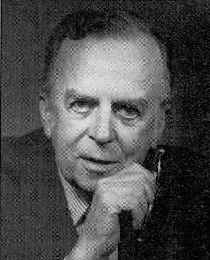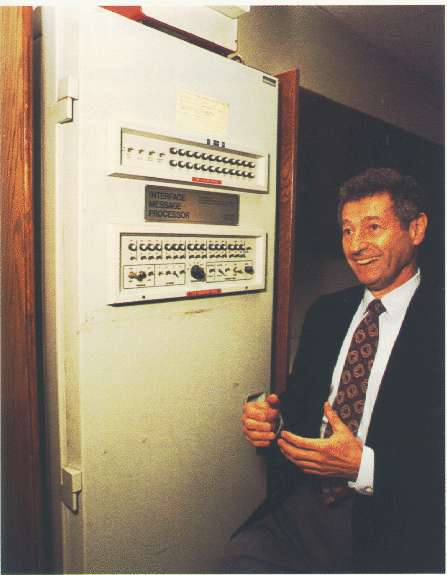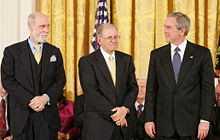Introduction
The Internet is both ubiquitous as wells as nearly infinite. There are millions of technologies, services, and providers that comprise the modern Internet. It is the largest network the world has ever known and the information that travels its infrastructure increases every day at an astounding rate and there is no end in sight.
In this tutorial we have organized many of the Internet technologies, services, and resources that are applicable for Internet Authoring and Programming track scholars to learn in concert with their various courses of study.
The Internet
Simply stated, the Internet is the largest WAN in the world (see LAN and WAN for context). A more verbose definition would be, the Internet is a publicly accessible infrastructure of interconnected routers, switches, and access points which process and forward packets of information from one host to another using protocols defined by the Internet Engineering Task Force (IETF). Some of these protocols are commonly known, like http for instance. The Hypertext Transfer Protocol (http), also known as the World Wide Web (WWW), is how Web browsers communicate back and forth with Web servers. In other words the World Wide Web is a service that operates over the Internet infrastructure. The Simple Mail Transfer protocol (SMTP), or email, operates this way as well. Email servers are simply computer software utilizing the SMTP protocol to service send and receive requests. These servers process and forward emails over the Internet's infrastructure using SMTP. Email clients generally use
the Post Office protocol (POP) to communicate with email servers over the Internet's infrastructure to send and retrieve electronic messages.
A Brief History of The Internet
 A Logic Named Joe
A Logic Named Joe
So how did the Internet get started? Some say the journey began in 1946 when a writer of science-fiction comics, using the pen-name of Murray Leinster (real name William F. Jenkins), wrote a story called A Logic Named Joe which described, to some degree, concepts that would be used by the Internet decades later.
The Advanced Research Projects Agency
In 1958, for defense purposes spurred on by the Cold War and Russia's launch of Sputnik, a branch of the United States Department of Defense (DOD) was established and referred to as the DOD's Advanced Research Projects Agency (DARPA) which was later renamed ARPA by officials who felt that the "D" (which represented the Department of Defense) should be removed from the acronym in order to make the organization's name less ominous sounding. The organization has since been renamed again back to DARPA. At about that same time, during the late 1950's, a gentleman by the name of J. C. R. Licklider, known as JCR or "Lick" to his friends, colleagues, and acquaintances, worked as a vice-president at a company called Bolt, Beranek, and Newman (BBN). Based on the projects that Lick and his co-workers worked on at BBN, in 1960 he began writing a series of three papers known as the Galactic Network memos which described his vision of a galactic network - a network of computers that allows users to gather data and access computer programs anywhere in the world. The first paper he wrote Man-Computer Symbioses, described Licklider's view of man's interaction with computers and the need for computer time sharing.
 J. C. R. Licklider
J. C. R. Licklider
A year later another Internet visionary and Massachusetts Institute of Technology (MIT) professor, Leonard Kleinrock, wrote a paper on packet switching networks. In 1962, Licklider wrote his second paper titled,
On-Line Man Computer Communication, describing the concept of social interaction through the networking of computers; later that same year Lick was appointed as the first director of the Information Processing Techniques Office (IPTO) for ARPA.
First Packet On The Internet
 Leonard Kleinrock with first IMP
Leonard Kleinrock with first IMP
In 1965, MIT researcher Lawrence G. Roberts and Thomas Merrill made the first interstate connection of computers by telephone line; proving that computer network communication would have to use "packets" to exchange data instead of using single bits at the circuit level. In 1966, Roberts joined DARPA and in 1967 completed drawing up a plan for realizing Lick's dream, the ARPAnet. In 1968, Licklider and Robert W. Taylor wrote the third and final paper about Lick's Galactic Network which was titled The Computer as a Communication Device. Further work by Robert Kahn, Kleinrock, and others brought the ARPAnet closer to fruition until in 1969 it became a reality. The now UCLA computer science professor Kleinrock and U.S. DOD contractor BBN were instrumental in establishing communication between the first two nodes of the ARPAnet, UCLA and the Stanford Research Institute (SRI), on October 29, 1969 with the implementation of two
Internet Message Processors (IMPs) installed at each site. Professor Kleinrock was supervising his student/programmer Charley Kline (CSK) and they set up a message transmission to go from the UCLA SDS Sigma 7 host computer to another programmer, Bill Duvall, at the SRI SDS 940 host computer. The transmission itself was simply to "login" to SRI from UCLA. They succeeded in transmitting the "l" and the "o" and then the system crashed! Hence, the first message on the Internet was "lo", as in "lo and behold! They were able to do the full login about an hour later.
From NCP to TCP/IP
 Vint Cerf & Robert Kahn with President George W. Bush
Vint Cerf & Robert Kahn with President George W. Bush
The first communication protocol designed for use on the ARPAnet was called the Network Control Program (NCP). During the year 1970, the Arpanet is growing at the rate of one node added per month. In 1972, Ray Tomlinson of BBN writes the first email program to send messages across the ARPAnet, he uses the @ sign to test his program by sending an email to himself. In 1973 Vint Cerf and Robert Kahn began writing a paper later published in May 1974 describing the Transmission Control Protocols (TCP). In December of 1974 the term "Internet" began to be used to describe a global TCP/IP-based network of the ARPAnet along with several other, mainly X.25-based, networks that were cropping up in the U.S. as well as Canada and Europe (Britain & France). However, it wasn't until flag day of 1983 that the ARPANET officially adopted TCP/IP as its core networking protocol.
Reluctance of Early Adopters
In the beginning there was a lot of resistance by large companies, research facilities, and places of higher learning to join the Arpanet; all of them had large, powerful computer networks of their own, and didn't really want to share them with others, so their acceptance of the idea of joining their networks together with others via a public, unsecured, network was not a vision embraced by many network administrators of the day. The Internet then got a little more prompting from the U.S. government. In 1988, Vice President Al Gore, heard a report titled Toward a National Research Network by UCLA's Kleinrock (view book on right - you will need Flash installed in your browser to view it), which prompted Gore to introduce a bill into congress, the High Performance Computing and Communication Act of 1991 which led to the creation of a document called the National Information Infrastructure (NII) defining four Network Access Points (NAPs) to be located in Washington D.C., Pennsauken, N.J., Chicago, Il. and San Francisco, CA, for providing regional access to what was then emerging into the mother of all WANs, the Internet. The National Science Foundation (NSF) awarded contracts for operations and maintenance of the original four NAPs to MFS Datanet, Sprint, Ameritech, and Pacific Bell respectively.
The Internet Spawns The World Wide Web
 Tim Berners-Lee
Tim Berners-Lee
As more and more people who had influence over the huge and previously private
data networks realized the benefits of the Internet, one by one they began joining.
The Internet began growing rapidly, by 1990 the ARPAnet was phased out. In 1991 the Gopher protocol
was released by the University of Minnesota, and the World Wide Web (WWW) is developed by Tim Berners-Lee and released by the European Organization for Nuclear Research - CERN, and the rest as they say "is history."